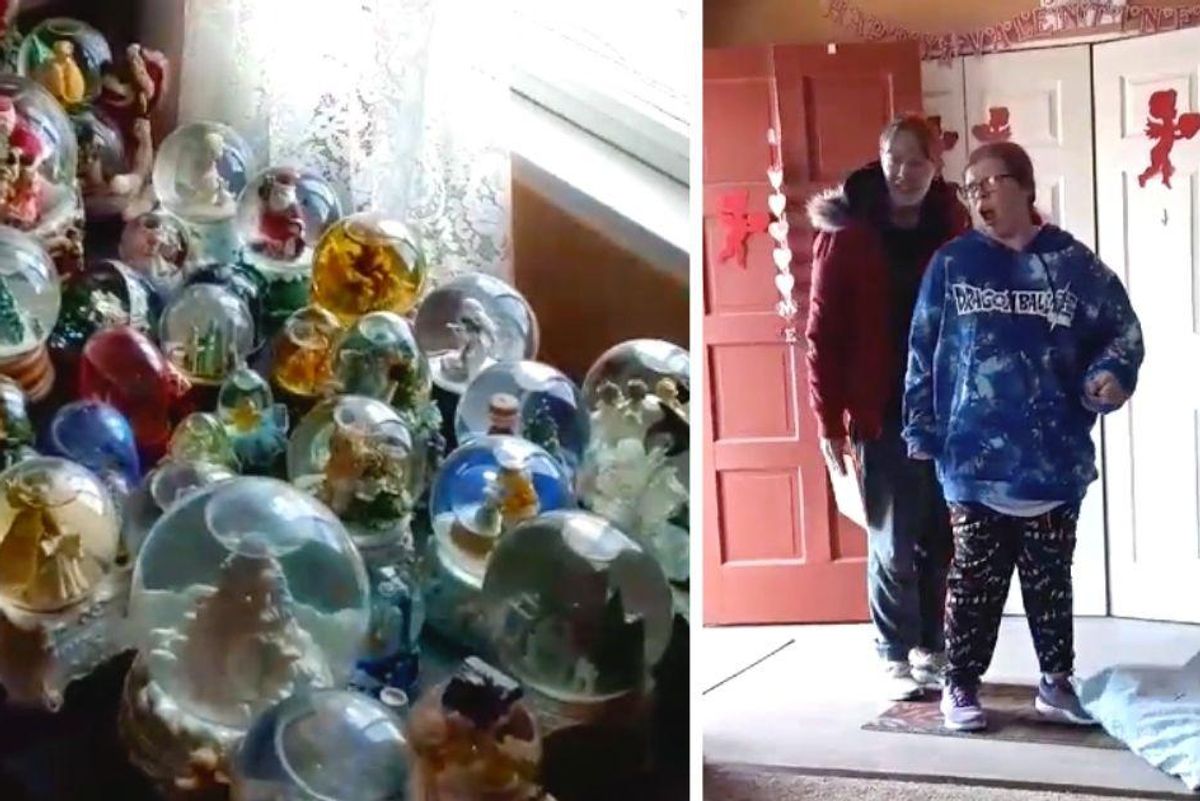Teen's reaction to neighbors replacing her shattered snow-globe collection is priceless

Janae was delighted to be given dozens of snow globes to replace her beloved collection.
When Janae was a young child, her grandparents gifted her a snow globe. She was mesmerized by it, which caught her family's attention as it was one of the first "toys" she had ever really played with.
Janae has a rare genetic disorder called Williams Syndrome, which causes a host of developmental and physiological challenges, including learning delays and issues with various organs. At 15 years old, Janae has already been through two open-heart surgeries and countless other medical procedures.
Many kids with Williams Syndrome don't play with toys, preferring to engage with people rather than things. In fact, extreme friendliness and abundant love for everyone they meet are unique features of people with Williams, which is part of why Janae's aunt, Stefanny Avera, describes her as having "a heart of gold."
"It is by far her 'special ability,' although medically it is classified as a disability," says Avera.
When Janae showed a keen interest in snow globes, her family started collecting them in their travels to give to her. She kept the collection on a special shelf in her bedroom.
But one night in January, Janae awoke to a terrible crashing sound. Her snow globe shelf had fallen off the wall, shattering her collection and devastating Janae.
"I was on the phone at the time with her mom and I heard her just bawling," says Avera. "She was so worried that everyone would be upset that they broke and that she'd never get new ones."
Avera wanted to do something to help, so she turned to the local community. She posted a photo of Janae on the Nextdoor app to reach her Thornton, Colorado neighbors and explained what had happened. She thought maybe she could buy some used snow globes from people in the community to help Janae rebuild her collection.

